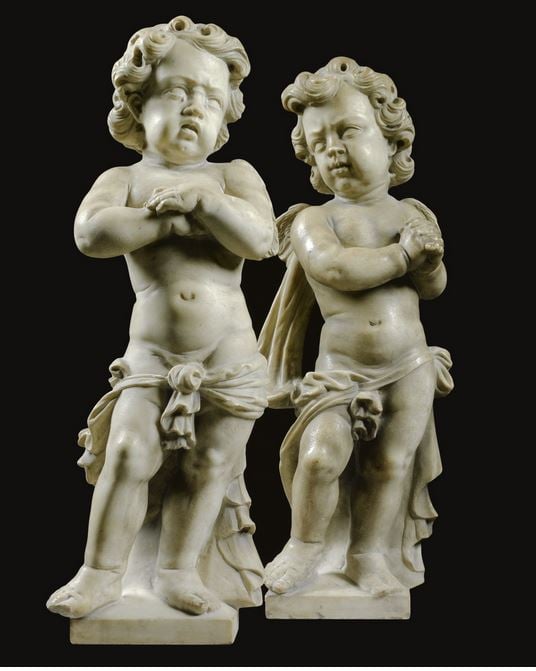
As 3-D printing makes it possible to recreate sculptural masterpieces from anywhere in the world, intellectual property concerns are discouraging some from sharing scans of works even when they are in the public domain, reports Slate.
One example? A cast of Michelangelo’s Moses, displayed on Sioux Falls, South Dakota, campus of Augustana College. When local resident Jerry Fisher posted a downloadable scan on the 3-D printing website Thingiverse, he was quickly contacted by the school and convinced to take the file down.
Peggy Kapusta, the college’s director of online communications told Slate that Augustana reached out to Fisher because they were concerned that “he did not seek permission from the college, the city of Sioux Falls or the families of the artist and/or the Fawicks,” who donated the statue. Despite the college’s vague worries, Michelangelo’s work predates the existence of copyright law, and is indisputably in the public domain.
A 3-D print of Michelangelo’s David. Photo: soulstice, via CG Trader.
“Twenty years ago, your average person didn’t know anything about copyright law,” Michael Weinberg, vice president of Washington, DC–based copyright law nonprofit Public Knowledge, told Slate. “One of the Internet’s lessons was that copyright is everywhere. That’s a reasonable shorthand to have, but it becomes problematic,” he said, when citizens create intellectual property concerns where there are none.
Far from being in the wrong, Fisher was actually continuing a long tradition of creating copies of sculptures. Some of Western civilization’s most iconic sculptures are actually replicas: the exterior Florence’s famed Duomo and Baptistry have long displayed replicas of the original Gates of Paradise and other sculptures by Renaissance greats to avoid exposing the originals to the elements, and the Vatican Museums‘ famed Belvedere Torso is an ancient Roman copy of an even older Greek original. Indeed, London’s Victoria and Albert Museum recently reopened its Italian Cast Court, home to Queen Victoria’s personal plaster cast of Michelangelo’s David (see The Victoria and Albert Museum Reopens Cast Court with Queen Victoria’s David).
The 3-D printing scan of the British Museum’s granite bust of Egyptian pharaoh Amenemhat III (1,800 BC), now available for download at Sketchfab.
Photo: Sketchfab.
Offering people around the world the chance to interact with an accurate facsimile of historically significant sculptures is only one of a multitude of applications that this new technology has. The wonders of 3-D printing have seen a concert played on nearly entirely 3-D-printed instruments, machine parts printed in space by NASA, the recreation of Marcel Duchamp’s lost chess set, and the first presidential bust created with a 3-D printer (see Swedes Stage First Ever Concert on 3-D-Printed Instruments, NASA Successfully Uses 3-D Printer in Space, 3-D-Print Your Own Readymade Copy of Marcel Duchamp’s Chess Set, and Obama Is First 3-D Scanned and Printed President).
Already, institutions such as the Smithsonian, New York’s Metropolitan Museum of Art, and London’s British Museum are beginning to make scans of some objects in their collections available for download (see Recreate British Museum Artifacts Through 3-D Printing). Clearly, 3-D prints hold the potential to provide unprecedented access to the world’s artistic masterpieces, and a database of downloadable scans of public domain sculptures would be an invaluable resource. The key to making such a dream a reality is to not let misplaced copyright concerns get in the way of our explorations of this technology.